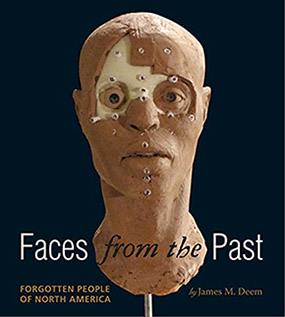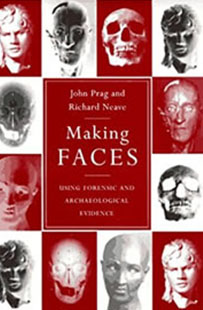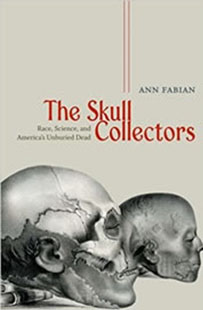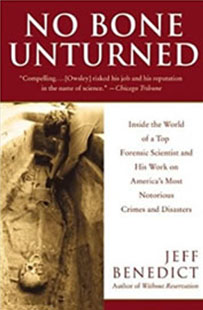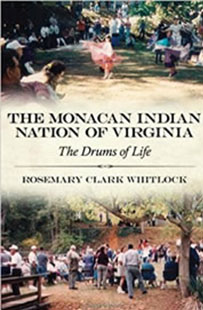Hardcover edition, 2012. |
~~ Related Books by James M Deem: ~~ |
Once, no humans lived on the continent of North America; then they began to journey here.
The first migrants arrived perhaps fifteen or twenty thousand years ago. Scientists believe that people from Asia had settled on a one-thousand-mile-wide land bridge (now called Beringia) that connected present-day Siberia to Alaska. Eventually, some of their descendants moved onward to North America and spread out across the land.
Much later, others came from Europe, from Africa, from Asia and other places. Some came willingly; some were enslaved and brought against their will.
But all settled on this continent.
And when the earliest settlers of North America died, so long ago, they were buried in caves or isolated graves. Later, others built burial mounds or cemeteries for their dead. Over time, many of the mounds were robbed and destroyed. Many early cemeteries disappeared from sight when makeshift grave markers blew away in the wind or decayed. Sometimes the early dead were not even buried; they simply fell where they were wounded and came to rest where they lay. No matter how they died or were buried, as time passed these people were forgotten.
Today, when a skeleton from centuries ago is discovered, scientists want to study it to discover information about the person’s life and death, about her or his time and place in history. Sometimes artists are asked to reconstruct faces from the past, using replicas of their skulls. Then these nameless, unknown people can be brought back to life, remembered, and honored.
Now, when their skeletons are discovered, their stories can be told.
These are the stories in the book:
Chapter 1. The Man From Spirit Cave (Nevada)
The man was very ill on the last day of his life. His people fed him, near the edge of the marsh where they lived. When he died, they carried him up a slope to a shallow cave. There they dug his grave, lined it with sagebrush, and placed his wrapped body inside before covering it with dirt. No one suspected that his final rest would be disturbed many thousands of years later.
Chapter 2. Making Faces from the Past (J. S. Bach and other early facial reconstructions)
When he began to lose his eyesight, he agreed to an operation. When that failed, he allowed another. The result was complete blindness, and he died soon afterward. He was buried in the cemetery of a local church, his grave unmarked. He became more famous after death, and when his body was discovered many years later during excavations in the churchyard, his skull was used to bring him back to life.
Chapter 3. Amoroleck's Ancestors (two Monacan Indians, circa 1000-1400)
No one knows how or when the man and woman died, though it was between one thousand and fourteen hundred years ago. They may have known each other or they may have died centuries apart. When they died, their bodies were placed in a burial mound. Over the years the mound grew as bodies were added. It remained a monument to all who had lived before…until the diggers arrived, and then their bones were taken.
Chapter 4. A Stranded Sailor from France (from LaSalle's final expedition, 1686)
The sailor was a long way from home—across the ocean in a new land—when he died a horrible, thirsty death. His body was curled into a ball surrounded by coils of rope that had been tied to the ship’s anchor. Not long afterward, the ship sank in a shallow bay and was covered with a thick layer of mud. When archaeologists discovered the shipwreck more than three hundred years later, they found it was a treasure trove of information about life in the last part of the 1600s. It was also the sailor’s coffin….
Chapter 5. Pearl from Colonial New York (1742)
She had spent her life working hard. At death she had infections and abscesses, a painful left leg, and gout in both feet. She was buried in the Lutheran burying ground on Pearl Street, but if any record of her burial existed, it was lost over time. And when the burying ground was later relocated, the woman’s coffin was forgotten beneath the ever-expanding city of Albany.
Chapter 6. The Forgotten Burying Ground at Schuyler Flatts (enslaved workers, circa 1750-1790)
Some grew up to work until they died. Others, though, were stricken with disease and died as infants or young children. Old or young, they had only first names, and after they were dead, no one kept a record of them or their location in the burying ground. Soon, all signs of their graves disappeared. When they were accidentally discovered hundreds of years later, a sad, hidden side of Schuyler Flatts became known.
Chapter 7. A Mexican Soldier from San Jacinto (1836)
The soldier was killed in a brutal battle, his body left with hundreds of others to rot in a field. After a year, his skull was picked up and given to a collector, who catalogued it and placed it on a shelf. Eventually, it came to rest in a Pennsylvania museum. Many years later a researcher found the forgotten skull and made sure that the soldier’s story was told.
Chapter 8. The People of the Almshouse Cemetery (1826-1926)
They were the poorest people in town when they were buried in the almshouse cemetery. The oldest of them died in the almshouse hospital or dormitory, the youngest in the nursery at birth. Still others died in the nearby penitentiary or in the river. And when the almshouse eventually closed, its cemetery was forgotten until new buildings needed to be built. Then the graves had to be uncovered, and the secrets of the cemetery were revealed.
Chapter 9. Thomas Smith, Buffalo Soldier (1865)
He was young, finally free from slavery, and living in a desolate place far from home. Then he contracted cholera and died. He was buried in an army cemetery, but when it was relocated, he and many others were left behind and forgotten. Then one day the grave robbers found him and decided to steal his body.
Chapter 10. Six Chinese Miners from Wyoming (circa 1881)
They came to North America to make their fortunes and died digging coal from the mines of Wyoming. But the lonely cemetery was lost over time. Some one hundred years later, construction workers uncovered them accidentally, reminding everyone of what their hard work had accomplished.
Honors and Reviews
2013 Outstanding Science Trade Book for Students K-12
CCBC Choices 2013
School Library Journal Best Children’s Books 2012
 SCHOOL LIBRARY JOURNAL
SCHOOL LIBRARY JOURNAL
(starred review)
"Gr 5 Up–Beginning with the startling photograph of a partially reconstructed face on the cover, this book effectively brings to life the people of North America forgotten by the history books. Beginning with the oldest existing mummified human remains–a man discovered in Spirit Cave, Nevada, dated to approximately 10,500 years ago–Deem moves forward chronologically to burials belonging to the Monacan tribe of Virginia (1000-1400), a French sailor traveling with La Salle (1686), the forgotten burial of a woman in colonial New York (1742), a rediscovered slave burial ground (1750-1790), and a Mexican soldier killed shortly after the Alamo (1836). He discusses the poor buried in an Almshouse Cemetery (1826-1926), a Buffalo Soldier (1865), and, finally, Chinese Miners in Wyoming (1881). Each chapter highlights the hardships endured by these early Americans as documented by the bones they left behind and interpreted by anthropologists. A thorough explanation of the archaeological techniques used to exhume these forgotten remains is combined with the known history of each period to create a clear picture of the difficult lives the people uncovered in these forgotten burials faced. Further humanizing these forgotten people are the careful facial reconstructions painstakingly rendered by sculptors whose careful, scientific process is outlined in fascinating detail. Deem tactfully addresses the issue of excavating and displaying human remains and gives an emotional resonance to the lives of these early Americans through the inclusion of poems exploring some of the painful aspects of American history. Clear prose, pleasing layout, and crisp photographs combined with subject matter rarely explored in history books make this...an excellent choice for most collections."
 KIRKUS REVIEWS
KIRKUS REVIEWS
(starred review)
"An absorbing introduction to anthropological facial reconstruction. Deem introduces five particular individuals and four other specific burial sites in North America where remains and archaeological contexts offer clues to the identities of the dead. He explores how people who were poor or enslaved or at war lost their lives in ways that left them forgotten or unknown. Seeing their faces reconstructed from the skull remains is compelling and moving in and of itself and provides a vehicle for us to understand more deeply who they might have been when alive. From the remains of Nevada's Spirit Cave Man, discovered in the 1940s (and in the 1990s realized to be 10,500 years old) to the burial grounds of poor and enslaved people in New York and immigrant Chinese miners in Wyoming, Deem's straightforward prose and consistently precise and respectful approach makes this exceptionally readable as history as well as science. The photos, especially of the skulls, casts, masks and diagrams used in the work of reconstruction, are clear and sharp. Diagrams and archival photos are also provided. Sidebars offer additional information and sometimes serve as segues to historical accounts that expand on the narratives, though the book's design means that readers must occasionally jump past this supplementary material over a page turn in order to follow the narrative. Extensive, comprehensive backmatter.... Impressive and fascinating."
Bulletin of the Center for Children's Books
"Readers familiar with Jackson's The Bone Detectives (BCCB 4/96) and McClafferty's The Many Faces of George Washington (BCCB 6/11) have already considered how forensic sciences and facial reconstructions have been used in the service of crime investigation and envisioning historical figures. Here Deem takes a chronological look at nine cases in which such reconstructions help interpret a specific moment in American history. Each study is a well-polished gem of a tale, framing the details of archaeological excavation, historical background, public policy issues, cultural controversies, and final disposition of the human remains with an unwavering respect for the dignity of the deceased and the communities that claim them. Packed with illustrations (color not seen) and carefully placed sidebar information, this title brings to life such diverse figures as paleoamerican Spirit Cave Man; "Pearl," a slave from eighteenth-century upstate New York; a buffalo soldier whose corpse was reassembled and given an honorable burial; nine persons among the 1,271 bodies found in pauper's graves in an almshouse cemetery. Quotation sources and thorough bibliographic notes for each chapter are included, as well as an index and suggestions for further reading on each topic. A strong choice for independent reading, this will also be a boon to social studies and science teachers in search of classroom readalouds."
School Library Journal, Nonfiction Booktalker
"James M. Deem’s Faces from the Past: Forgotten People of North America (Houghton, 2012) not only describes faces from thousands of years ago to the early 1900s, but also tells us exactly how the artful science of facial reconstructions is performed, with work-in-progress examples. To a face fanatic like me, this book is a visual feast. What do we learn from the skulls of soldiers whose bodies were left to rot on the battlefield of San Jacinto in 1836 Texas? And who even thought to collect them? It was bird-lover John James Audubon who picked up four of them as a gift for a collector friend in Philadelphia. Who knew there were skull collectors?
"Deem reconstructs the lives of those buried in the Almshouse Cemetery in Albany County, NY. The poorest of the poor are buried with convicts from the nearby penitentiary and drowning victims retrieved from the Hudson River. Poor as they may have been, life in the Almshouse was an improvement—the skimpy food, horrible living conditions, and lack of stimulating activities were better than starving to death or living without shelter. The riveting facial reconstructions reveal their lost lives: bad teeth often led to death, a common revelation of many ancient skulls....
"Stare at the face of a French sailor from 1686, or of a Buffalo Soldier, a Chinese miner, or a lost Monacan Indian. The stories go on and on. And they can all be seen in people's faces. Without saying a word, these skulls and skeletons tell us much about ourselves. Ask your booktalk audience, What does your face say about you?"
 BOOKLIST
BOOKLIST
(starred review)
"People live and people die, but once in a while they get to come back to shed light on their origins and societies. Deem, Sibert Honor-winner for Bodies from the Ice (2008), introduces some of those people, from as far back as 10,000 years ago, buried and rediscovered. Now, their bodies and burial materials are making both historical and scientific contributions, thanks to the archaeologists, anthropologists, and forensic artists examining them. Beginning with the discovery of Spirit Cave Man, who was thought to be a thousand years old and turned out to be 10 times older, and ending with an African American Civil War soldier, whose body was nabbed by grave robbers, this describes how the bodies were found, the stories surrounding them, and the science that elucidated them. In fact, this is as much a book about scientific techniques—especially that of facial reconstruction—as it is about history. Whether he’s describing how a French sailor under the command of La Salle died in shipwreck or the way 20th-century inmates of an almshouse were treated, Deem’s writing is riveting and his research deep. Illustrated with copious photographs and historical artifacts,...a top-notch effort with solid backmatter, too."
Children's Literature
"When scientists discover skeletons from centuries past, they want to use the remains to identify things about the culture and people of that time period. Sometimes the skeletons themselves can provide details to the scientists. Sometimes specialized artists are asked to create facial reconstruction using models of the skulls found. Using more than thirty markers, these artists can create a clay replica to show what the person may have looked like. The clay replicas are painted to look more realistic and sometimes a wig is added. These are often displayed in museums. Faces from the Past explains the process of facial reconstruction and follows the stories of the reconstruction of faces in several important discoveries in North America, including the remains of a man who lived more than ten thousand years ago. Though some of the details are grim, this book provides valuable insight into the process of facial reconstruction and its purpose. Author James Deem masterfully weaves together the history of each forgotten person or group and shows how the reconstruction process brings those stories to life again. Recommended."
Horn Book
"The talented practitioners of historical facial reconstruction draw on their knowledge of history, art, and science to show us what the faces of long-dead humans may have looked like. Working from skulls, sometimes only partially intact, the sculptors carefully build layers of bone, muscle, fat, skin, and hair. Deem explores nine periods in American history and prehistory, recounting the lives and times of people—from 'Spirit Cave Man,' a resident of the American Southwest thousands of years ago, to the unnamed inhabitants of a New York almshouse from the early twentieth century—whose remains have been located across North America. The profiles detail the careful work of modern-day archaeologists to uncover and preserve these skeletal remains, as well as the science behind the reconstructions, including the fascinating use of typical measurements of the position and thicknesses of various facial elements to make estimates for the sculptures. Copious illustrations include portraits of the sculptors at work, the facial reconstructions themselves, and the historical and modern-day sites in which these people lived."
International Reading Association
"In Faces from the Past, Deem details how archaeologists use the combined powers of chemistry, biology, history, and art to learn about those who lived before us. The book includes nine case studies of forgotten people rediscovered, beginning with 'the man from Spirit Cave,' whose remains were first discovered in 1940 and 50 years later were determined to be more than 10,000 years old. Others whose lives were brought to light long after their deaths include ancestors of the Monacan Indians of Virginia, a French sailor from LaSalle's failed expedition to the New World, a Mexican solider who died at the Battle of San Jacinto, and a Buffalo Soldier who died of cholera while serving at Fort Craig in New Mexico. Discoveries near Albany, New York, echo a theme of 'the forgotten poor,' a servant woman whose remains were found during excavation for street improvement, slaves whose burial places were undocumented, and residents of an almshouse-infants to elderly-buried in a cemetery discovered again through construction. Each case study can stand alone for individual reading, but together they highlight the delicate dance between scientific exploration and social concerns. The text is clear, direct, and engaging, replete with photographs of archaeological work and supporting artifacts, plus sidebars that often provide more insight into the human stories."
Curriculum Connections
"In Faces, Deem...takes readers from Spirit Cave outside of Fallon, NV, and a 17th-century French ship found at the bottom of Matagorda Bay on the Gulf coast of Texas, to a Colonial burial ground in Albany, NY, and the site of the Battle of San Jacinto near Houston, TX. As the subtitle notes, the author set out to explore the lives of the 'forgotten,' often 'nameless,' people of our past; a Paleoamerican man, a sailor on Le Salle's last expedition, enslaved workers at an upstate New York farm, and massacred Mexican soldiers left unburied during the Texas War for Independence. In detailing these discoveries, Deem discusses what their remains have taught us about these individuals: their physical appearance, the foods they ate, their labors, and the causes of their deaths, when known. He includes primary source materials—letters, family and city records, and early maps and reproductions—to reconstruct...their histories. He documents how researchers...were able to determine that a particular Wyoming location was the likely burial site of six Chinese workers killed in a mine blast in 1881....The author also describes radiocarbon dating and surveys the history of facial reconstruction from late 19th-century to modern techniques, with notes on the work of anatomists and sculptors and the challenges their assignments present. He illustrates the latter with fascinating step-by-step photographs."
